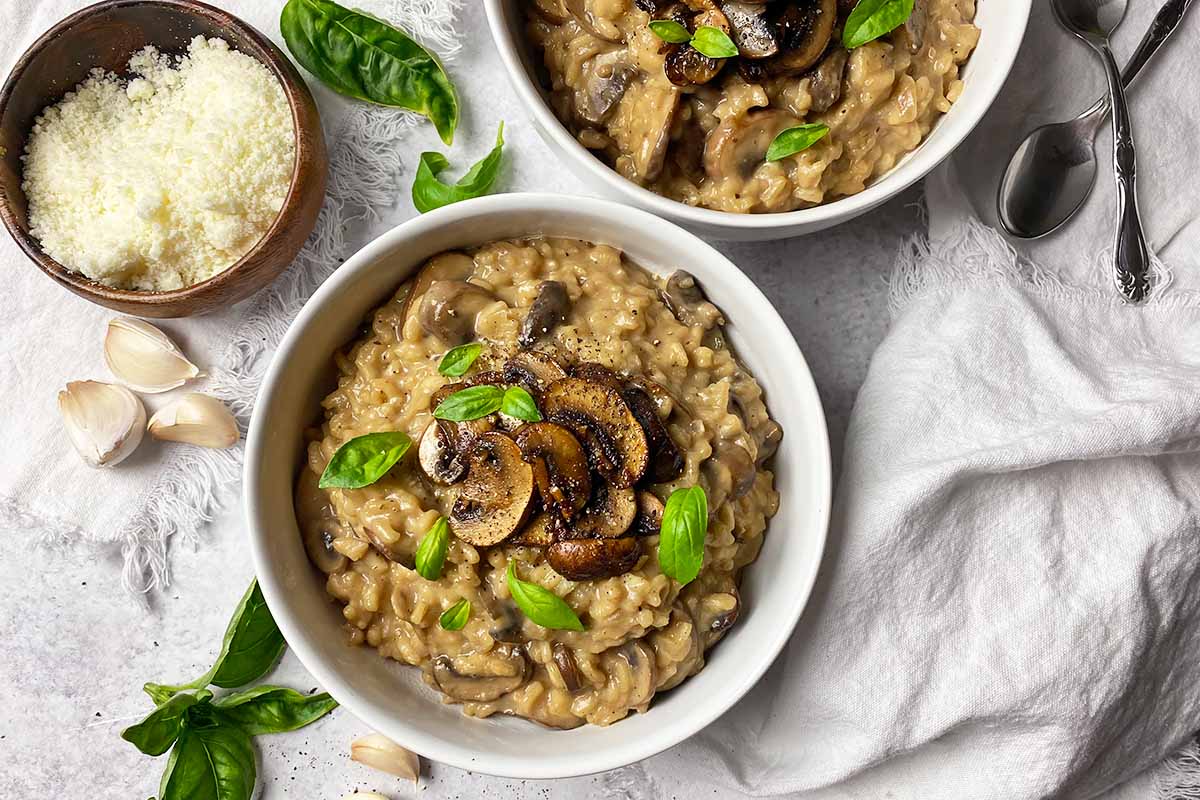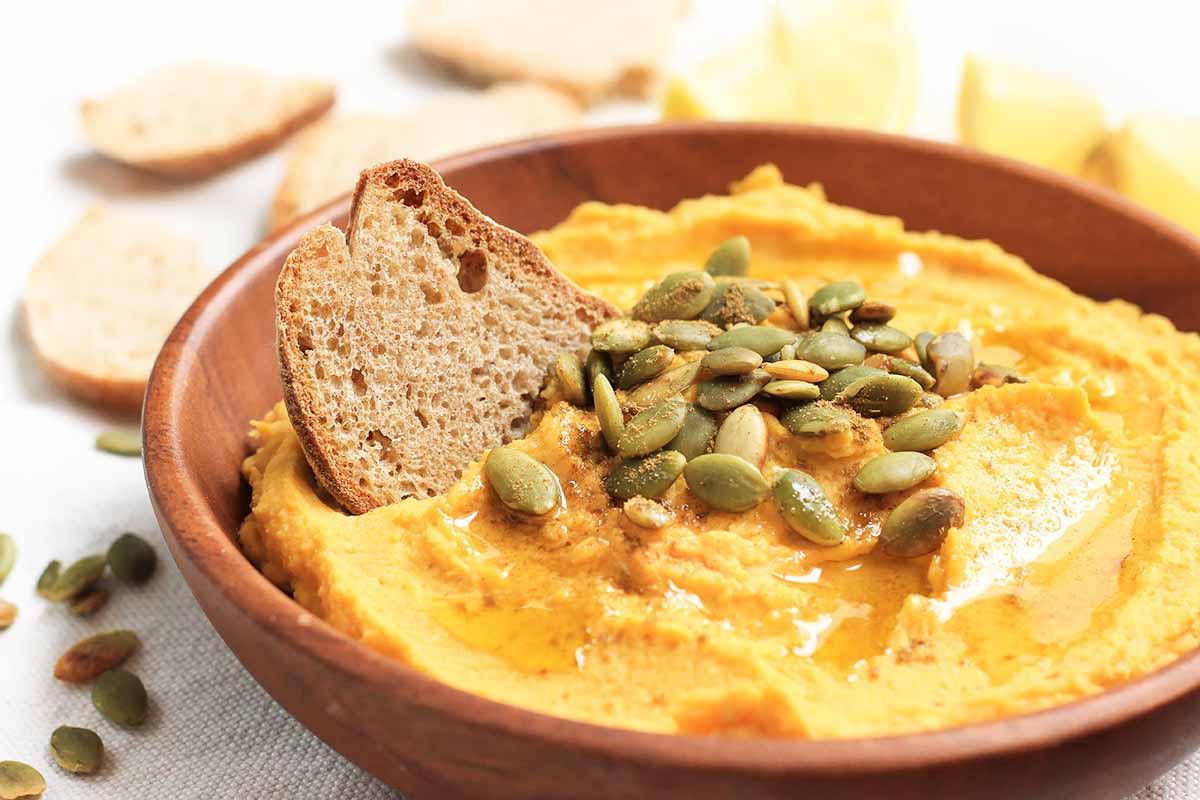What is basmati rice?
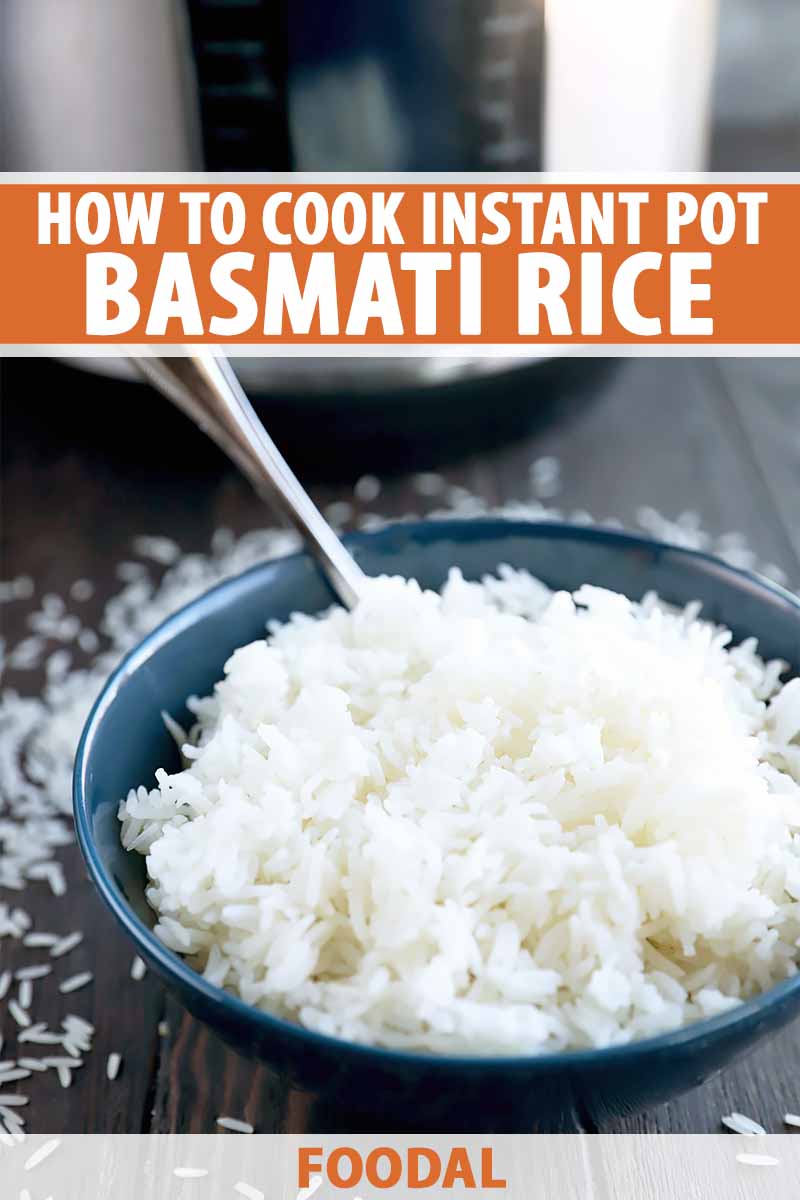
If you haven’t tried it before, you are missing out.
This slender, aromatic grain hails from India. It’s extremely popular all over the world, but in my opinion, it goes particularly well with Indian dishes.
And if you want the best results possible, I think making it in the electric pressure cooker really is the best way to prepare it.
To begin with, it’s so simple. As long as you follow the instructions provided here, you are guaranteed to produce perfectly cooked results every single time you make it.
Here’s what’s ahead in this article:
What You’ll Learn
Why Should You Make This Type of Rice?
How Is Basmati Rice Different from Other Grains?
Why Should I Soak the Rice Instead of Rinsing It?
Why Should You Make This Type of Rice?
So, why should you make this side dish? Because it’s delicious, of course!
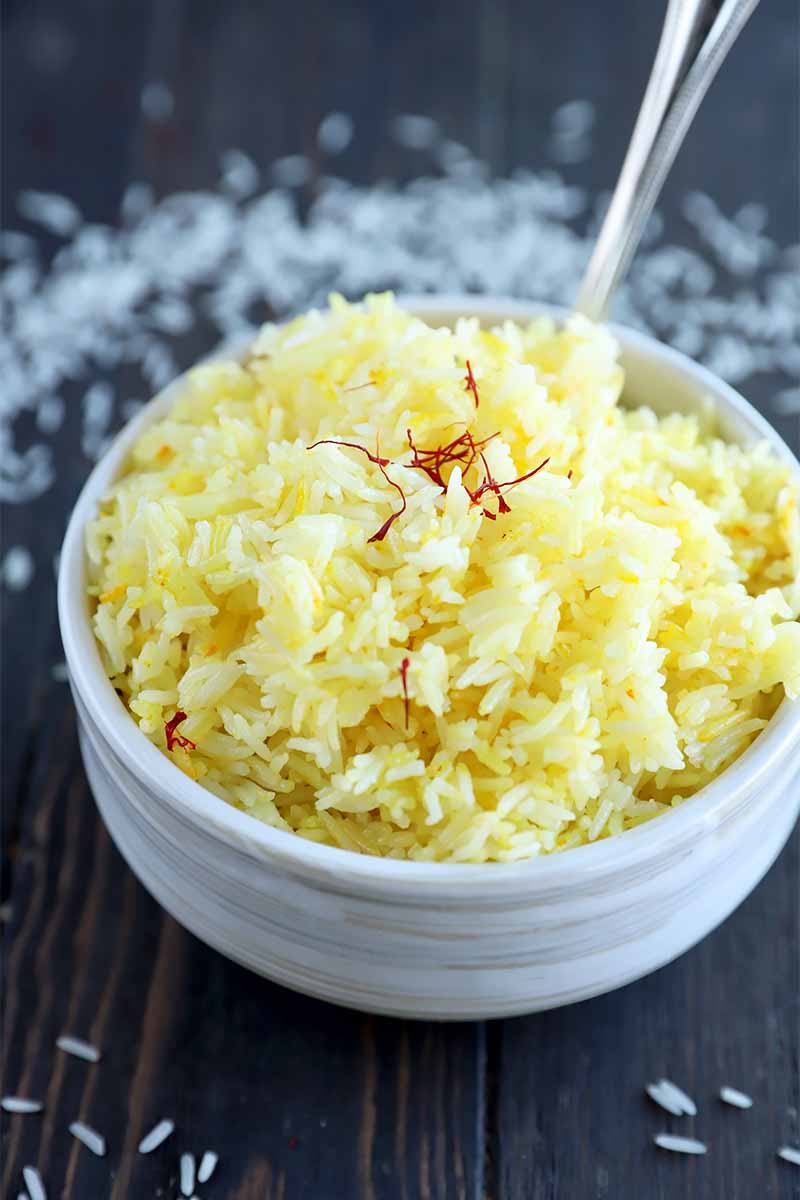
I really like this type because it has a slightly nutty flavor to it. This is what makes it so good with curry, butter chicken, or any of the suggestions that I have included later in the article. Keep reading for more tasty ideas!
When the basmati variety is cooked the right way, you can tell right away just by looking at it, because the grains are separate. They shouldn’t stick together at all, and the texture should be soft and fluffy.
This definitely isn’t a mushy or watery grain. The grains hold their own, and the texture makes it really stand out from many of the other types out there.
Now, let’s chat about some creative ways to use this grain, shall we?
Crispy
I love using basmati when I have extra left over to make a crispy dish. You can easily form it into patties and cook it until it’s golden brown in a frying pan, but you can also use a saute pan.
With Saffron
This is a fantastic way to change up the plain grain. Add about three or four strands of saffron to the grains before setting it to cook in the pressure cooker. The result is aromatic and downright mouthwatering.
Fried
This is my personal favorite way to use up any leftovers, quickly cooked in a pan with some oil, soy sauce, hot sauce, and left over veggies. It’s especially tasty when it’s topped with a fried egg!
Side with an Indian Meal
Serve it with an Indian main dish, or a protein entree and a few veggie sides. This can include curries, biryani, butter chicken, and so much more.
Pilaf
This is always a lovely way to shake up your weeknight side dish routine. Get started with this recipe that’s jam-packed with warming spices and sweet veggies.
Pudding
My grandmother loved this dessert and I still make it in her honor to this day. Basmati makes a rich and flavorful pudding with a delightful texture that has a bit of chew.
For something a little different, try this mango version.
How Is Basmati Rice Different from Other Grains?
This is a long grain type that is subtly aromatic, but the real selling point is its slightly nutty, buttery flavor.
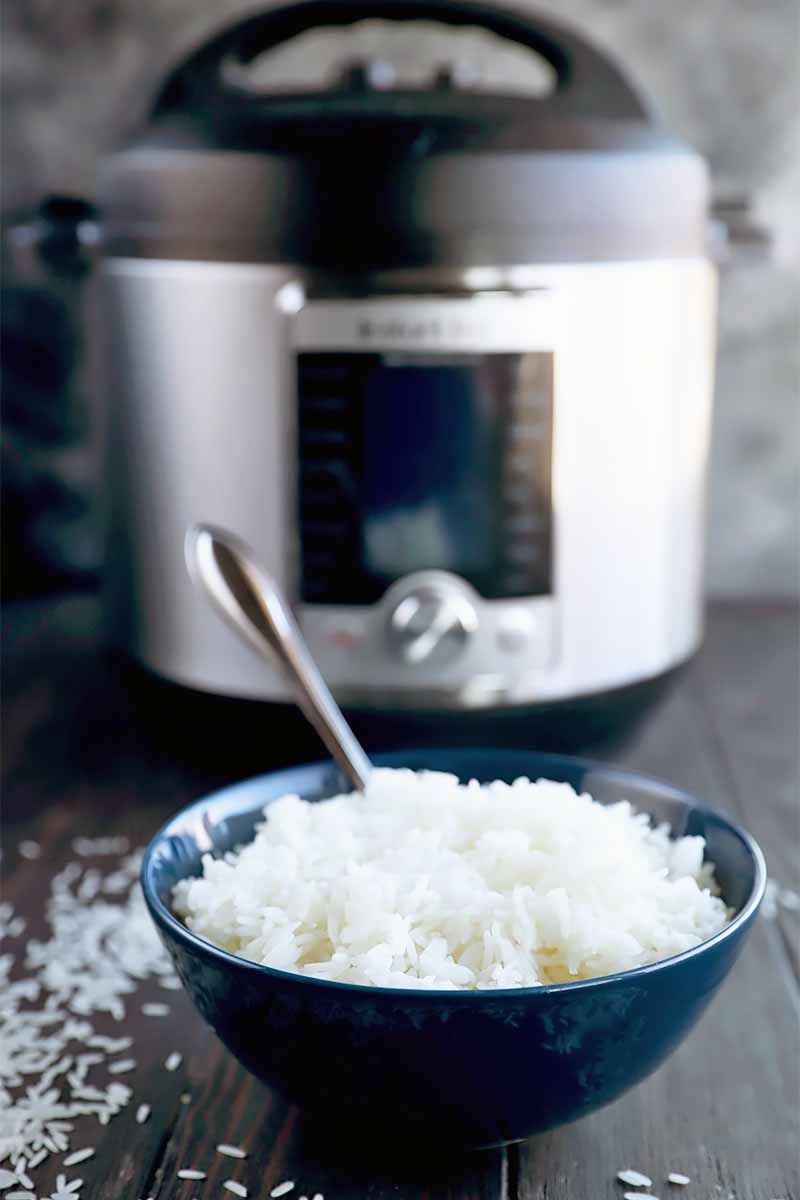
The fact that the grains don’t stick together also makes it unique to other types.
Why Should I Soak the Rice Instead of Rinsing It?
Soaking makes a big difference because the fragile grains are able to absorb a bit of water, and they become more pliable as a result.
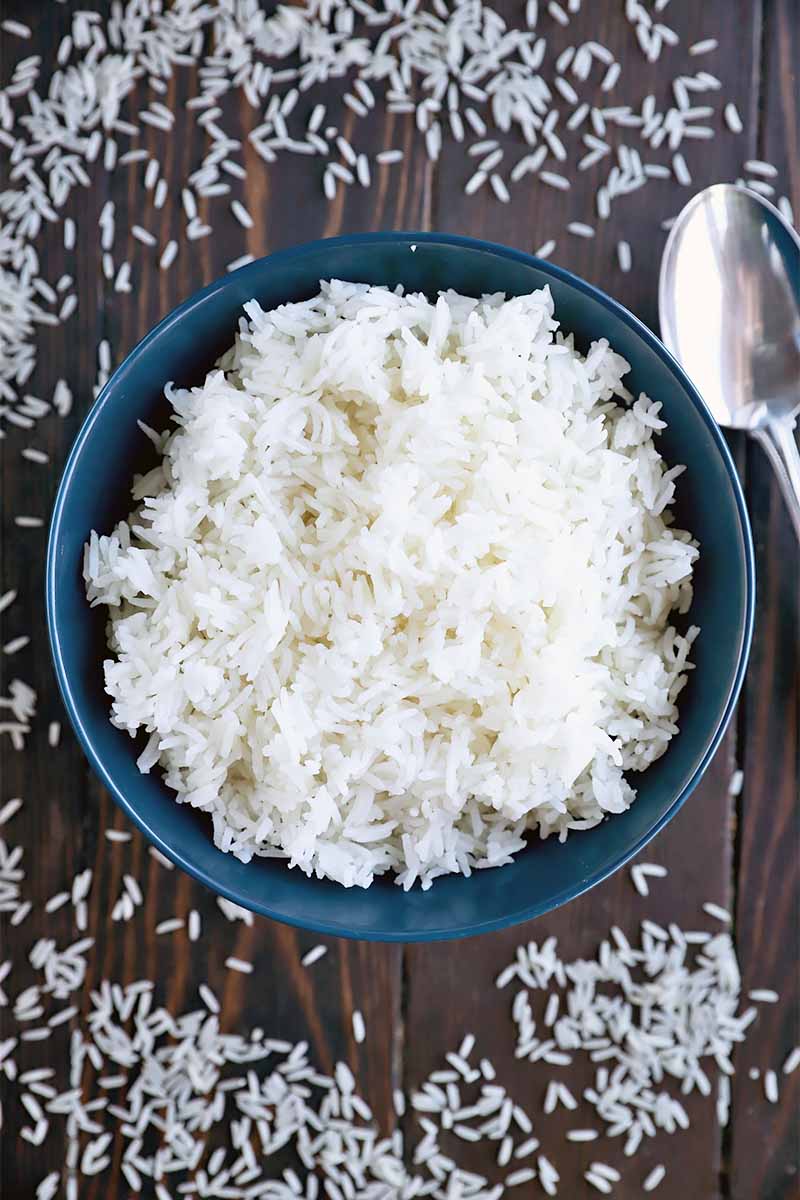
The soaking process also helps to reduce the amount of starch that’s present, so each individual grain doesn’t stick together or to the bottom of the pressure cooker insert. You’ll likely have less broken grains and nice separation and texture as a result.
So, whether you are going to serve your basmati as a side or you plan to use it as the base of a fried rice dish or a dessert, this type of grain will surely outshine many of the others you’ve had before – particularly when it’s prepared to perfection.
How to Cook Basmati Rice in the Electric Pressure Cooker
Ready to dish up some delicious basmati? Here’s the best way to make it.
Step 1 – Measure Ingredients and Soak Rice
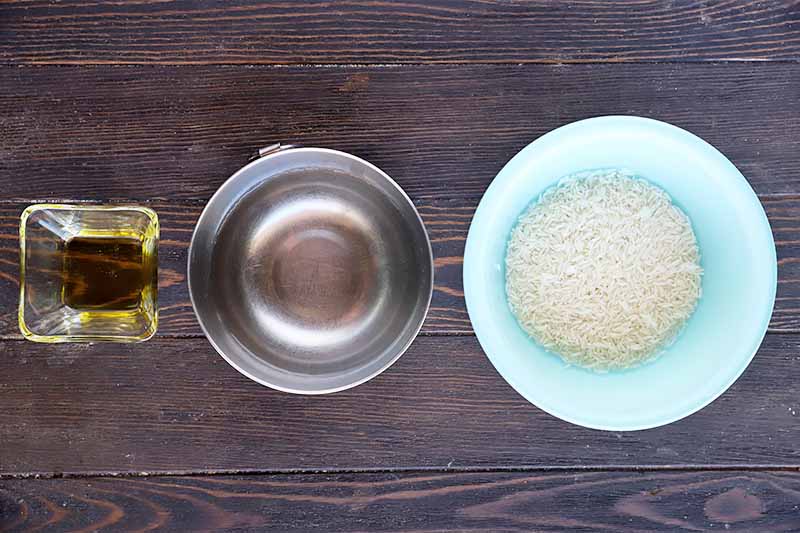
You will need the following:
- 1 cup basmati rice
- 1 cup water + more for soaking
- 1 teaspoon ghee or olive oil (optional)
- 1/2 teaspoon salt (optional)
Add the rice to a medium-sized bowl and add enough water to cover the grain. Soak for one hour, then rinse and drain.
Measure out the water, as well as the ghee or oil and salt, if you will be using them.
Step 2 – Pressure Cook
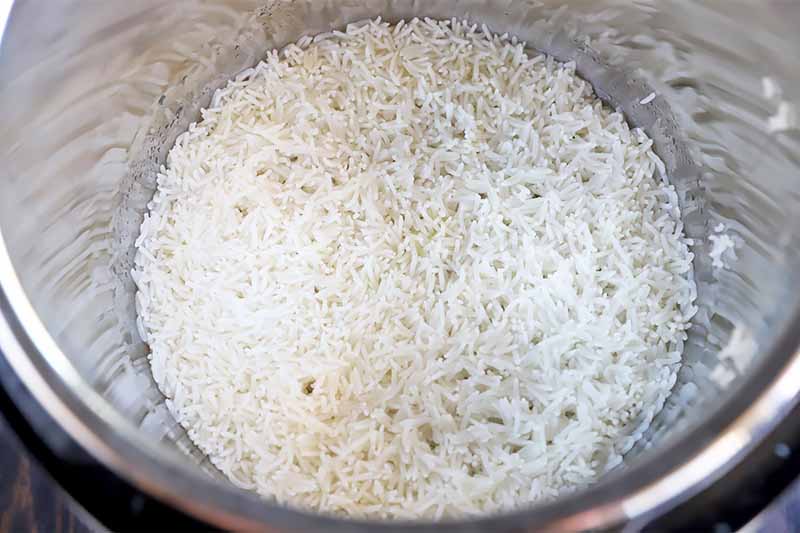
Add the rinsed and drained grains to your Instant Pot or other electric pressure cooker insert with the water, ghee, and salt that you measured out.
Set to Manual pressure mode on High pressure for 4 minutes. Then let the pressure release naturally for 5 minutes before manually releasing any remaining pressure.
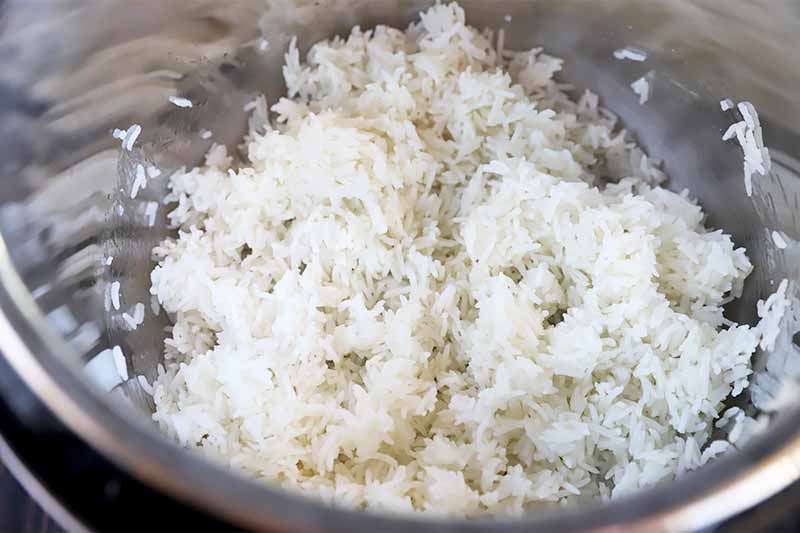
Fluff everything with a fork, and let it stand for 5 more minutes before serving.
Can I Skip Soaking the Rice If I Don’t Have Time?
The truth is, yes, this is a step that you can skip if you don’t have the time to do it.
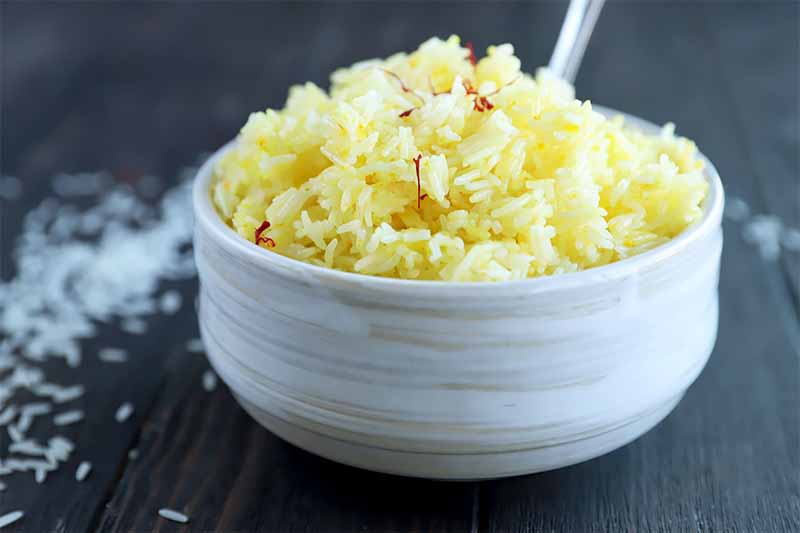
If you are in a rush, at least be sure to rinse the grains until the water runs clear and is no longer cloudy.
It’s important to note that skipping this step may result in more broken grains, and the end result might be a little more sticky if you skip the initial soak. This isn’t ideal.
Nonetheless, if you are really rushed, you can skip it and still get dinner on the table. It will still be edible, though it might not be perfect.
Want to know how to cook other types of rice in the electric pressure cooker? Here are some more of our expert articles to add to your reading list next:
How will you devour your bowl of basmati the next time you make it? Tell us in the comments below!
Photos by Meghan Yager, © Ask the Experts, LLC. ALL RIGHTS RESERVED. See our TOS for more details.
Nutritional information derived from a database of known generic and branded foods and ingredients and was not compiled by a registered dietitian or submitted for lab testing. It should be viewed as an approximation.
About Meghan Yager
Meghan Yager is a food addict turned food and travel writer with a love for creating uncomplicated, gourmet recipes and devouring anything the world serves up. As the author of the food and travel blog Cake 'n Knife, Meghan focuses on unique foodie experiences from around the world to right at home in your own kitchen.



